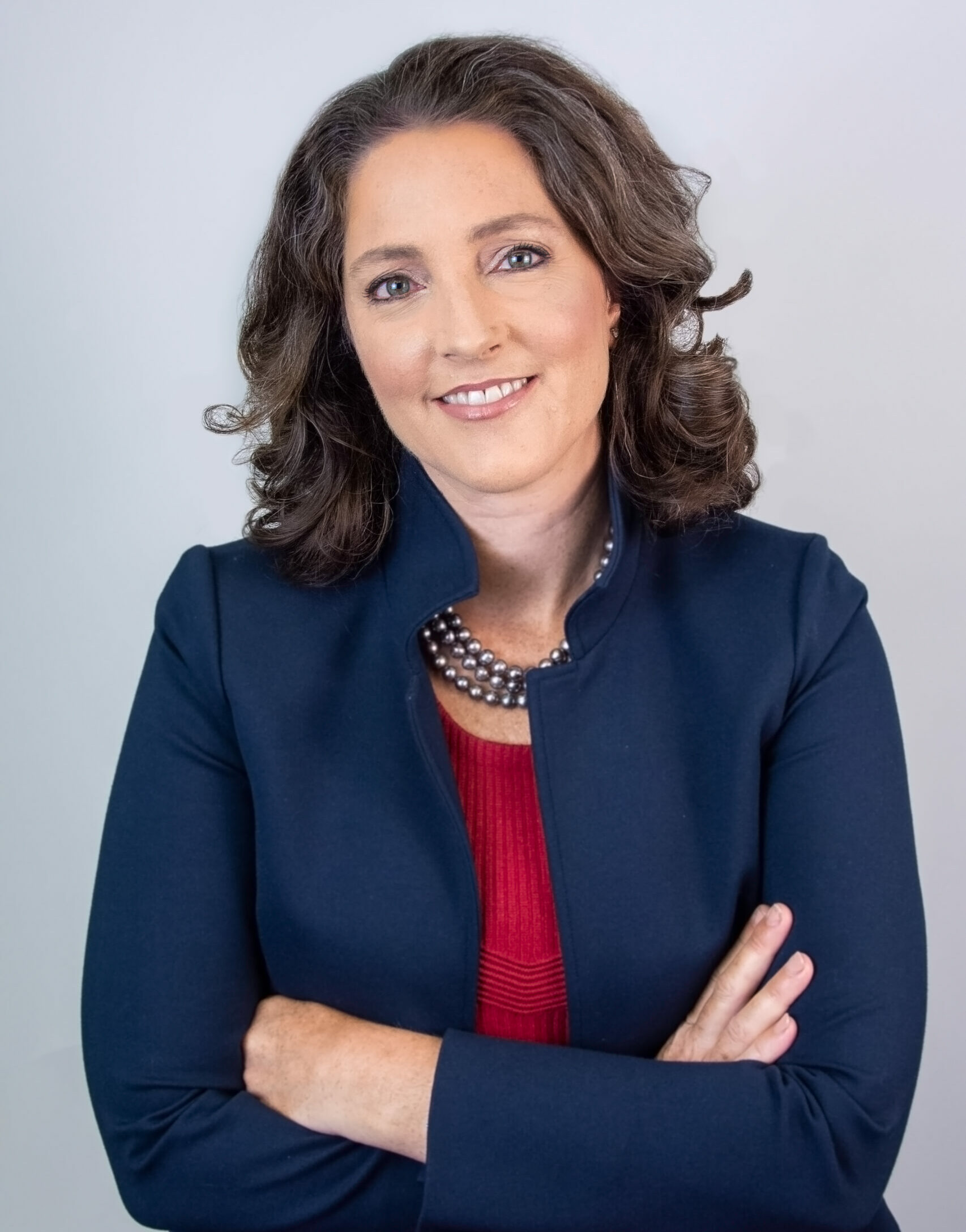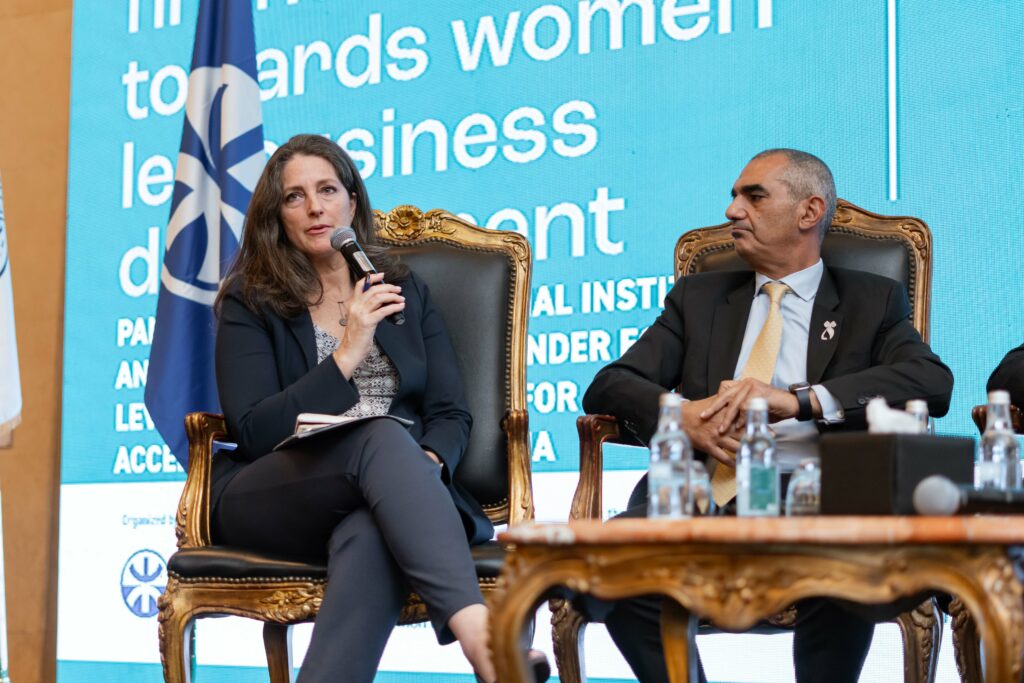interview
Wendy Teleki, Head of the Women Entrepreneurs Finance Initiative (We-Fi) Secretariat
Wendy Teleki is the Head of the Women Entrepreneurs Finance Initiative (We-Fi) Secretariat. Prior to joining We-Fi in 2019, she worked at the International Finance Corporation (IFC), the private sector arm of the World Bank Group. At the IFC, she spearheaded efforts to help private and public institutions in emerging markets expand financing and support for small businesses and women entrepreneurs. Ms. Teleki led programs to privatize and build the small business sector in Ukraine in the early 1990s, developed solutions for SMEs in Indonesia during the Asian Financial Crisis, launched innovative SME finance and advisory offerings, and pioneered blended finance efforts.
In 2022, she was named one of Forbes’s “50 Over 50” women in finance for her leadership in advocating for women’s economic empowerment and entrepreneurship. She holds an MA in International Economics from Johns Hopkins School of Advanced International Studies (SAIS) and an MBA in Finance from the Wharton School of Business.
About We-Fi: The Women Entrepreneurs Finance Initiative (We-Fi) is a groundbreaking partnership housed in the World Bank that aims to unlock financing for women-led/owned businesses (WSMEs) in developing countries. We-Fi’s partners include 14 donor governments, six multilateral development banks as implementing partners, and numerous other stakeholders in the public and private sector around the world. As of December 2024, We-Fi
__________________________________________________________________________________________________
- Recently, the BBVA Microfinance Foundation (BBVAMF) has become a global signatory of the WE Finance Code, an initiative of the Women Entrepreneurs Finance Initiative (We-Fi) hosted by the World Bank Group. Having said that, what is the WE Finance Code, and why is a multi-actor initiative like this— one that brings together countries, international and development organizations —necessary?
The Women Entrepreneurs Finance Code (WE Finance Code) is a groundbreaking initiative designed to establish a shared set of principles and commitments for advancing women's access to finance, particularly for women entrepreneurs. This initiative introduces an exciting opportunity for financial institutions to voluntarily commit to supporting women entrepreneurs through three key pillars: designating a champion within the organization to lead efforts, collecting and monitoring sex-disaggregated data to track financing directed to women-led businesses, and taking concrete actions to support women entrepreneurs, such as developing tailored products or providing capacity-building programs to enhance their investment readiness.
As an initiative of the Women Entrepreneurs Finance Initiative (We-Fi), housed in the World Bank, the Code emphasizes collaboration among countries, international organizations, development institutions, and private sector stakeholders. It’s more than just a framework—it’s a catalyst for systemic change, creating a clear roadmap for signatories to align their actions with global goals to close the gender finance gap.
The Code was officially launched at the 2023 World Bank-IMF Annual Meetings in Marrakech, where presidents of six multilateral development banks signed a letter of endorsement. This collective commitment to the initiative is not only transformative but also sends a strong message about the importance of accountability and cross-sector collaboration in addressing systemic barriers to finance for women entrepreneurs. I find it truly inspiring to see such momentum building around this critical issue.
- Focusing on closing the Gender Gap, the WE Finance Code has identified some commitments for the signatories of the Code. What do organizations in the financial ecosystem and sector service providers require to adopt it?
To adopt the WE Finance Code effectively, organizations need to embrace both a commitment to gender inclusion and a readiness to implement targeted strategies. The Code itself is a voluntary pledge, allowing signatories to commit at their own pace while aligning their efforts with a broader framework for advancing women’s access to finance. This flexibility is critical, as it enables organizations of varying capacities and resources to participate meaningfully.
Leadership buy-in is a foundational requirement—institutions must prioritize gender equality at the highest levels and integrate it into their organizational culture. This commitment should translate into tangible actions, such as adopting gender-responsive lending practices, designing financial products tailored to women entrepreneurs, and implementing capacity-building programs for employees to address unconscious biases.
Organizations also need robust data systems to track progress and measure impact. The WE Finance Code emphasizes evidence-based approaches, requiring institutions to collect, analyze, and utilize sex-disaggregated data effectively. Collaboration is another key component: partnerships with development organizations, governments, and women-led business networks can amplify efforts and foster innovation.
Lastly, organizations in the financial ecosystem require access to innovative financing mechanisms, such as blended finance, guarantees, or risk-sharing facilities, to make serving women entrepreneurs more viable. The voluntary nature of the Code encourages institutions to experiment, adapt, and learn from each other, creating a dynamic environment where best practices can evolve and scale.
- In October 2023, We-Fi launched the Code, from its release to the present day: How has it been received and where has it been implemented?
The reception of the WE Finance Code has been overwhelmingly positive, and I’ve been impressed by how stakeholders across sectors recognize its transformative potential to address long-standing inequities in women's access to finance. Since its launch, the Code has generated significant momentum, spurring commitments from financial institutions, governments, and global organizations.
The Code is set to be piloted in nearly 30 countries, with early adopters such as Indonesia, the Dominican Republic, Fiji, Madagascar, Nigeria, Egypt, and Mongolia already launched their country Codes. These pilot countries are using the Code to enhance their national strategies for financial inclusion. Beyond the public sector, private sector banks in these countries are actively joining the initiative, forming national coalitions to align their practices with the Code’s principles.
Global organizations like UN Women, Standard Chartered, CARE, and the BBVA Microfinance Foundation have also joined as global signatories, adding their influence and expertise to the initiative. Their participation has amplified awareness and accountability at the international level. From what I’ve seen, early feedback from pilot countries shows that the Code is fostering innovation and collaboration, with exciting initiatives like gender-responsive lending programs and digital platforms for women entrepreneurs beginning to take shape. This momentum reflects a shared commitment to closing the gender finance gap and empowering women-led SMEs across diverse regions.
- There are more than 20 countries where WE-FI is implementing pilot programs as a part of the National Codes, which are the ones that serve to reach that global perspective. According to your findings and evidence of the implementations in developing countries, What actions and interventions may be effective in supporting the resilience of Women-led SMEs?
Supporting the resilience of women-led SMEs requires a multifaceted approach that addresses both immediate financial needs and systemic barriers. I find digital finance particularly exciting because it offers a transformative way to remove traditional hurdles, such as the need for collateral, which disproportionately impacts women entrepreneurs. By basing lending criteria on alternative metrics like business cash flow and transaction history, digital finance not only makes funding more accessible and inclusive but also reduces the intimidation many women feel when seeking financing. This approach helps them build a track record that can open doors to further growth and investment opportunities.
Another intervention that I’ve seen make a significant impact is the use of gender bonds, which incentivize financial institutions to prioritize lending to women-led businesses. We-Fi Implementing Partners have supported gender bonds in countries like the Dominican Republic, Bolivia, Brazil, Ecuador, and Indonesia. These bonds encourage banks to allocate specific portions of their portfolios to women entrepreneurs, aligning financial objectives with broader gender equality goals. I think it’s impressive how these bonds create direct financial incentives, driving systemic change in how banks approach lending to women and fostering an environment where their businesses can thrive.
Blended finance models are another powerful tool, combining public and private capital to reduce investment risks. I’ve noticed how effective this approach can be in bridging financing gaps, using concessional funding to de-risk investments and making them more appealing to private investors. For women entrepreneurs, this means access to critical resources that allow them to scale their businesses sustainably.
Capacity-building initiatives are equally vital. Women entrepreneurs gain so much from business development services like mentorship, financial literacy training, and networking opportunities. I’ve seen how these programs not only enhance their skills but also connect them to markets and supply chains, which are crucial for growth. In developing countries, integrating digital solutions—such as mobile banking and e-commerce platforms—has been transformative, giving women entrepreneurs the tools they need to scale their businesses despite logistical and mobility challenges. It’s inspiring to see how these combined efforts are creating real opportunities for women-led SMEs to succeed.
- Lastly, one of the main components of the code is the collection of national and global data, that we mentioned previously. In your opinion and going forward, what challenges lie ahead and how do you anticipate Data could help close the gender finance gap and accelerate the growth of the Women SMEs?
One of the most pressing challenges, I think, is the persistent lack of sex-disaggregated data. Without accurate and granular data, diagnosing the true extent of the gender finance gap, designing targeted interventions, or measuring progress becomes incredibly difficult. On top of that, systemic biases within financial institutions, along with entrenched social norms, continue to limit women's access to finance, making the challenge even more complex.
But data has the power to transform this landscape. By shining a light on disparities, data drives accountability and supports evidence-based policymaking. For example, data on repayment rates for women-led businesses—which, in many markets, are higher than those of their male-led counterparts—can challenge existing biases and encourage more lending to women entrepreneurs. I’ve seen how, at a macro level, such data can help governments and development organizations identify service gaps and allocate resources more effectively.
Looking ahead, advancements in technology like AI and blockchain present exciting opportunities to collect and analyze data on a scale we’ve never seen before. To fully harness this potential, though, investments in data infrastructure and capacity are absolutely crucial, especially in developing countries. It’s clear to me that collaboration among stakeholders is also essential to standardize metrics and share insights, ensuring the data we gather leads to actionable solutions. With these efforts, data won’t just bridge the gender finance gap—it will empower women-led SMEs to become engines of economic growth and social change.






